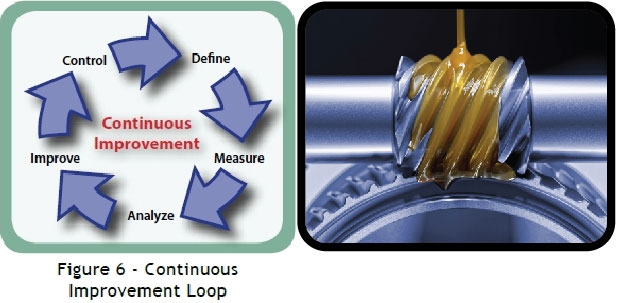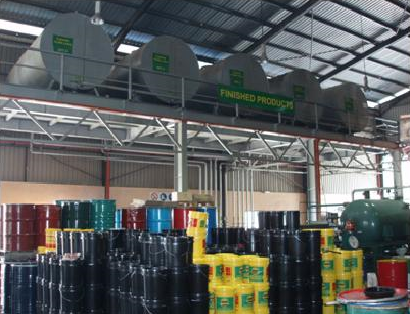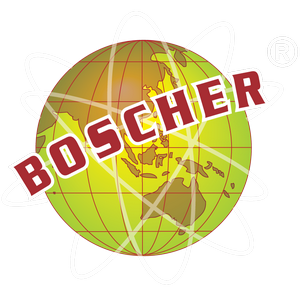Lubrication Culture & Management - Part 3
 Any high quality lubrication system requires individuals with world-class reliability skills. The operators and mechanics that are directly responsible for lubrication must be properly trained, and individuals that are indirectly involved in the lubrication program should also have at least a basic awareness of the goals, primary benefits, and its procedural requirements. In order for the organization as a whole to increase equipment reliability through lubrication excellence, it's vital that a lubrication skill development program be put in place to meet the needs of all individuals who have responsibility for lubrication tasks, or that may have input into the lube program.
Any high quality lubrication system requires individuals with world-class reliability skills. The operators and mechanics that are directly responsible for lubrication must be properly trained, and individuals that are indirectly involved in the lubrication program should also have at least a basic awareness of the goals, primary benefits, and its procedural requirements. In order for the organization as a whole to increase equipment reliability through lubrication excellence, it's vital that a lubrication skill development program be put in place to meet the needs of all individuals who have responsibility for lubrication tasks, or that may have input into the lube program.
Mechanics are most intimately familiar with the internal workings and condition of the plant's equipment, and they need sufficient technical knowledge about lubrication fundamentals to spot and accurately diagnose lubrication-induced abnormalities. These fundamentals also prove the importance of maintaining or restoring cleanliness during repairs and/or lubricant related activities.
Operators typically perform lubrication tasks and conduct inspections of equipment condition. This is a great opportunity to collect simple, inspection-based lubrication information. Beyond the level gauges, the operators should regularly inspect for filter and desiccant condition, evidence of water contamination, foaming and air entrainment, leaks, darkening of the oil, sludge, smoke or fumes exuded from vents, and a host of other easy-to observe conditions. These activities should be set up as a routine and controlled by the work management system to promote accountability and activity adherence. Operator Driven Reliability (ODR) lubrication training should be provided to ensure competency in performing these functions.
As the lubrication management system matures, the focus of the lubrication program goals and metrics should move from the development process to more proactive measurements. These might include refining lubrication limits and alarm levels, determining root causes of lubricant-related equipment failures, extending or eliminating lubrication Preventive Maintenance (PM) tasks, improving the lubrication consolation process and reducing oil consumption. The following is a simplified list of potential key indicators that could be used as the lubrication program matures:
Reduce Lubricant Costs - In a lubrication optimization program, the goal is to minimize the purchase of new lubricants through the consolidation of products, the elimination of time-based oil changes, and to minimize waste and leakage. When properly done, all of these measures should have a measurable effect on the dollars being spent annually on lubricants.
Improve Compliance to Scheduled Lubrication PM Tasks - All lubrication tasks need to be scheduled activities - from the daily level checks, sampling for oil analysis, re-greasing, top-ups, and scheduled oil changes. Measuring the percent conformance of PM's that were scheduled and completed, to that of PM tasks that were not completed within the required parameters (time, date, frequency, etc) allows for a quick and accurate view of PM compliance.
Adjust or Redefine Analysis Alert or Alarm Limits - Initial temperature, pressure and oil analysis alarms must be reviewed to ensure that the original target values are correct and that they appropriately reflect the equipment-specific operating condition of the equipment components. This is often accomplished by incorporating feedback from the maintenance activities and using lessons learned resulting from root cause analyses of failed components.
Improve Equipment Reliability - Performance indicators that relate to equipment reliability and availability remain significant to the effectiveness of the lubrication program. The goal is to minimize or reduce the number of lubrication-related equipment failures or significant events, but this remains difficult to determine if the actual root cause of an anomaly is not correctly identified.
Improve Oil Cleanliness Levels - It has been well documented that by improving the cleanliness levels of a lubricant, it will have a direct effect on the life of the component. Improvement in handling, storage, dispensing and filtration methods will assist in reducing the acceptable cleanliness levels, which will result in improved equipment reliability with the associated reduction in maintenance costs.
Tracking and Trending Lubricant Disposal Costs - Understanding total consumption, leaks, top-ups, and oil changes, helps drive the efforts and behaviors needed for the effective implementation of the lubrication program.

Many organizations ignore the fact that lubrication is an essential design principle of the equipment and only a dedicated, consistent and enduring effort to increase the plant's lubrication knowledge and maintaining the design requirements of your equipment will dramatically improve equipment reliability, uptime and profitability.


